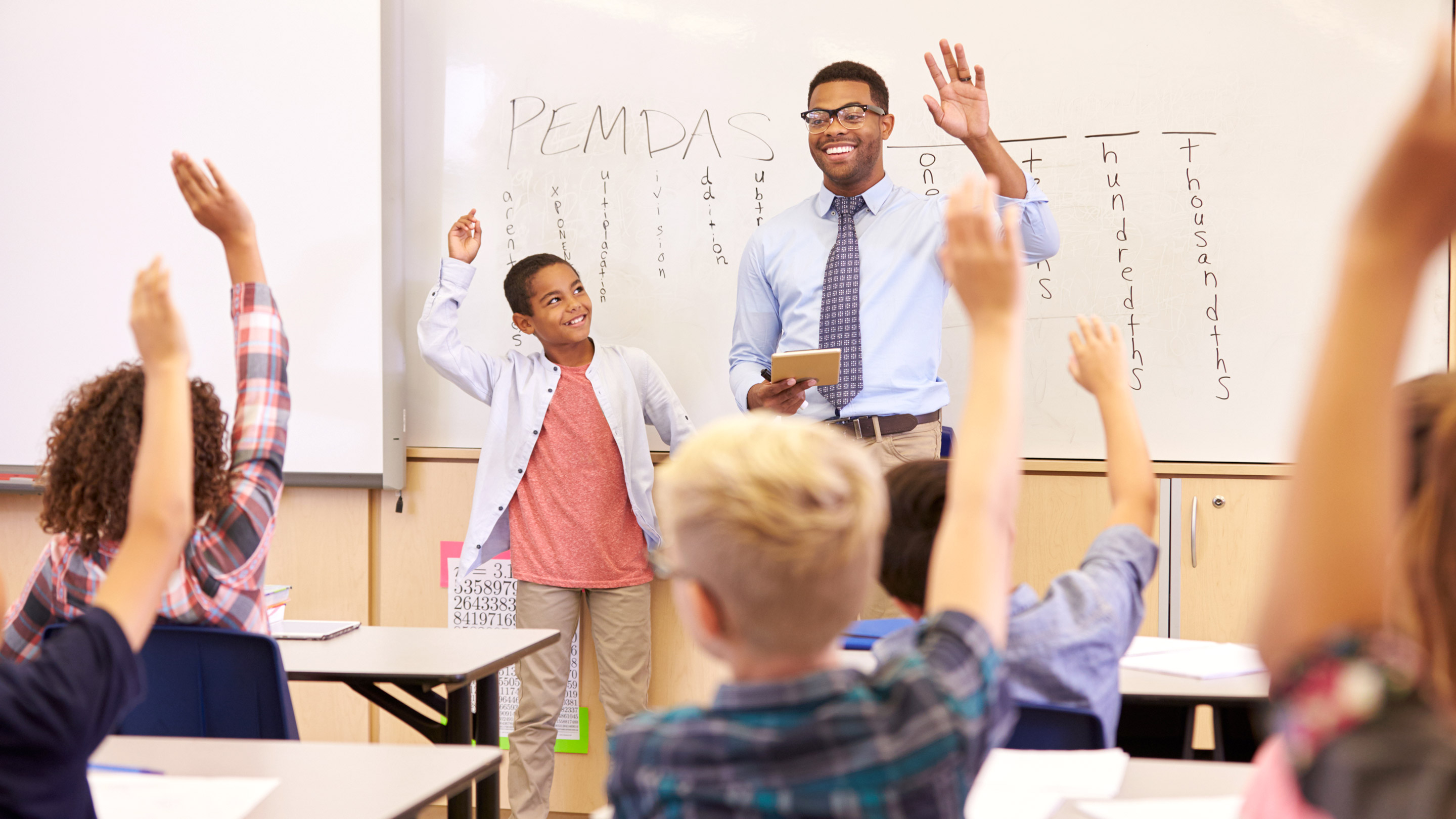Tailored Primary Science Tuition Singapore for Your Child’s Success
Tailored Primary Science Tuition Singapore for Your Child’s Success
Blog Article
A Comprehensive Guide to the Different Learning Methods in Main Scientific Research Direction
The expedition of diverse knowing methods in primary science instruction offers a chance for educators to improve student engagement and understanding dramatically. By taking a look at hands-on knowing methods, inquiry-based methods, and collaborative approaches, we can determine reliable methods that deal with numerous finding out designs. In addition, the integration of technology and set apart direction plays a crucial duty in promoting a comprehensive setting. The concern remains: how can these methods be successfully executed in the classroom to optimize their effect? The answer depends on a better analysis of each approach and its implications for training scientific research.

Hands-On Understanding Methods
Hands-on discovering methods play a critical function in main scientific research instruction, engaging trainees in active exploration and experimentation. These methods enable students to communicate directly with materials and sensations, fostering a much deeper understanding of clinical ideas. By utilizing manipulatives, models, and real-life experiments, educators create an atmosphere where pupils can observe, hypothesize, and check their concepts.
Such strategies not only enhance comprehension yet also cultivate crucial thinking and analytic skills. When pupils take part in activities like constructing simple equipments, planting seeds, or performing chain reactions, they are encouraged to ask inquiries and seek responses through their very own monitorings. This experiential technique aids to demystify complex scientific concepts, making them a lot more easily accessible and relatable.
Additionally, hands-on learning advertises cooperation amongst peers, as trainees often work in groups to conduct experiments or share searchings for. This teamwork not just enriches their understanding experience however likewise develops vital social abilities. Eventually, incorporating hands-on strategies in key scientific research instruction cultivates a long-lasting love of understanding and curiosity about the all-natural world, laying a strong foundation for future academic pursuits in scientific research and past.
Inquiry-Based Discovering
Inquiry-based discovering is an instructional strategy that motivates students to ask inquiries, examine phenomena, and construct their own understanding of scientific principles. This technique changes the emphasis from standard teacher-led instruction to an extra student-centered experience, where learners take the campaign in their academic journey. By fostering inquisitiveness, inquiry-based understanding advertises much deeper involvement with the product, enabling students to explore topics in a significant context.
In technique, this approach usually involves hands-on experiments, monitorings, and vital reasoning activities that align carefully with the scientific approach. Students are motivated to create theories, style investigations, and examine data, which cultivates crucial abilities such as logical and analytic thinking. The function of the instructor in this framework is to facilitate exploration, guiding trainees via the questions process while encouraging independent idea and cooperation.
Moreover, inquiry-based understanding supports a sense of ownership over the understanding procedure, motivating trainees to seek expertise proactively. This approach not just boosts understanding of scientific concepts but additionally promotes a long-lasting love for discovering, outfitting pupils with the skills required to navigate a progressively intricate globe.
Collaborative Discovering Approaches
Collective discovering techniques equip pupils to take part in significant communications with peers, cultivating a shared responsibility for their educational end results. In primary science direction, these techniques encourage students to collaborate to check out scientific ideas, address issues, and carry out experiments (primary science tuition Singapore). By taking part in team activities, students can leverage diverse point of views, permitting richer understanding and retention of scientific understanding
One key aspect of joint discovering is the focus on interaction skills. Students have to verbalize their thoughts, pay attention actively to others, and discuss concepts, every one of which are crucial proficiencies in both real-world and academic contexts. This social communication not just enhances their understanding of scientific principles but also advertises synergy and dispute resolution skills.
Additionally, collective knowing frequently brings about raised inspiration and engagement. When pupils see the value of their contributions within a team, they are more probable to take possession of their discovering journey. Educators can facilitate this process by creating organized group tasks that line up with navigate to these guys educational program objectives while providing support on efficient partnership strategies. On the whole, integrating joint discovering methods in key science direction grows a vibrant knowing setting that prepares pupils for future academic and social challenges.
Technology Assimilation in Science
The assimilation of innovation in key science direction boosts discovering experiences by providing cutting-edge devices and sources that support various training methodologies, including joint discovering - primary science tuition Singapore. Using digital platforms, simulations, and interactive applications permits students to involve deeply with scientific principles, promoting a more hands-on technique to understanding
Digital labs, for circumstances, enable learners to carry out experiments safely and efficiently, promoting inquiry-based discovering. These devices can imitate real-world clinical situations, allowing students to envision complex processes that would be challenging to reproduce in a traditional classroom setup. Additionally, modern technology promotes communication and partnership amongst students, as they can share findings and collaborate on tasks via online platforms.
In addition, multimedia discussions and educational video clips can improve lessons by accommodating diverse discovering designs, making abstract concepts extra obtainable. Data analysis devices likewise empower trainees to collect and interpret scientific information, strengthening vital thinking abilities. On the whole, the calculated incorporation of modern technology in main science guideline not just boosts interaction yet additionally website link prepares trainees for a technologically innovative society, outfitting them with vital abilities for future scientific endeavors.
Differentiated Direction Approaches
Distinguished direction methods are necessary for dealing with the varied demands of learners in main science education and learning. These techniques make it possible for educators to tailor their teaching approaches to fit varying abilities, interests, and finding out designs within the classroom. By using distinguished instruction, teachers can produce a comprehensive setting that fosters involvement and enhances understanding of clinical concepts.
One effective method is to utilize flexible grouping, which allows pupils to collaborate with peers at comparable ability degrees or with varying perspectives. This strategy motivates peer understanding and advertises vital thinking. Additionally, using choices in assignments can equip trainees, allowing them to pick projects that resonate with their rate of interests while still fulfilling curricular goals.
In addition, including tiered tasks is an additional useful method. Deliberately tasks with differing levels of intricacy, educators can ensure that all pupils are suitably tested, no matter of their proficiency. Using formative assessments to determine recognizing additional allows educators to readjust their instructional methods dynamically, making sure that each student obtains the support they need.
Ultimately, executing distinguished instruction approaches in key scientific research education not just boosts student understanding end results but likewise grows a passion for science, preparing trainees for great post to read future scholastic pursuits.

Final Thought
In recap, efficient key science instruction demands a multifaceted approach that encompasses hands-on discovering, inquiry-based methods, and joint techniques. The integration of technology and set apart direction additionally satisfies diverse understanding designs, fostering an environment for exploration and essential reasoning. By executing these techniques, educators can boost student involvement and comprehension, ultimately nurturing a lifelong enthusiasm for science and questions. Such thorough techniques are important for creating educated and curious future researchers.
The expedition of varied learning approaches in main science instruction presents a possibility for educators to enhance student engagement and comprehension significantly.Hands-on knowing strategies play a pivotal duty in primary scientific research guideline, engaging students in active expedition and trial and error.Inquiry-based knowing is a training method that encourages trainees to ask inquiries, check out sensations, and construct their own understanding of scientific ideas.Collective discovering methods equip pupils to engage in significant communications with peers, fostering a common responsibility for their instructional end results. Overall, incorporating collaborative understanding approaches in main science direction cultivates a dynamic understanding setting that prepares trainees for future academic and social obstacles.
Report this page